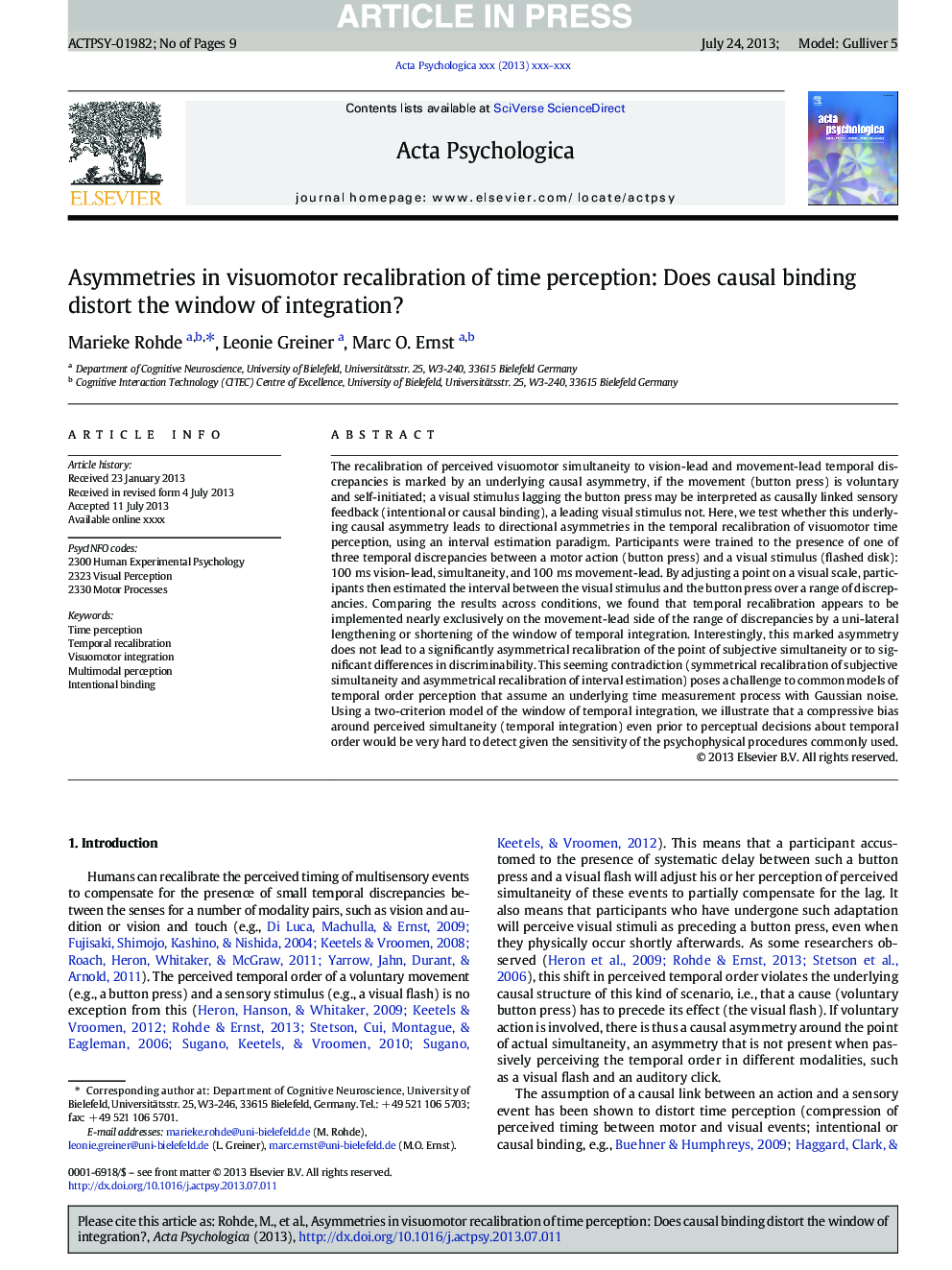| Article ID | Journal | Published Year | Pages | File Type |
|---|---|---|---|---|
| 7277948 | Acta Psychologica | 2014 | 9 Pages |
Abstract
The recalibration of perceived visuomotor simultaneity to vision-lead and movement-lead temporal discrepancies is marked by an underlying causal asymmetry, if the movement (button press) is voluntary and self-initiated; a visual stimulus lagging the button press may be interpreted as causally linked sensory feedback (intentional or causal binding), a leading visual stimulus not. Here, we test whether this underlying causal asymmetry leads to directional asymmetries in the temporal recalibration of visuomotor time perception, using an interval estimation paradigm. Participants were trained to the presence of one of three temporal discrepancies between a motor action (button press) and a visual stimulus (flashed disk): 100Â ms vision-lead, simultaneity, and 100Â ms movement-lead. By adjusting a point on a visual scale, participants then estimated the interval between the visual stimulus and the button press over a range of discrepancies. Comparing the results across conditions, we found that temporal recalibration appears to be implemented nearly exclusively on the movement-lead side of the range of discrepancies by a uni-lateral lengthening or shortening of the window of temporal integration. Interestingly, this marked asymmetry does not lead to a significantly asymmetrical recalibration of the point of subjective simultaneity or to significant differences in discriminability. This seeming contradiction (symmetrical recalibration of subjective simultaneity and asymmetrical recalibration of interval estimation) poses a challenge to common models of temporal order perception that assume an underlying time measurement process with Gaussian noise. Using a two-criterion model of the window of temporal integration, we illustrate that a compressive bias around perceived simultaneity (temporal integration) even prior to perceptual decisions about temporal order would be very hard to detect given the sensitivity of the psychophysical procedures commonly used.
Keywords
Related Topics
Life Sciences
Neuroscience
Cognitive Neuroscience
Authors
Marieke Rohde, Leonie Greiner, Marc O. Ernst,
